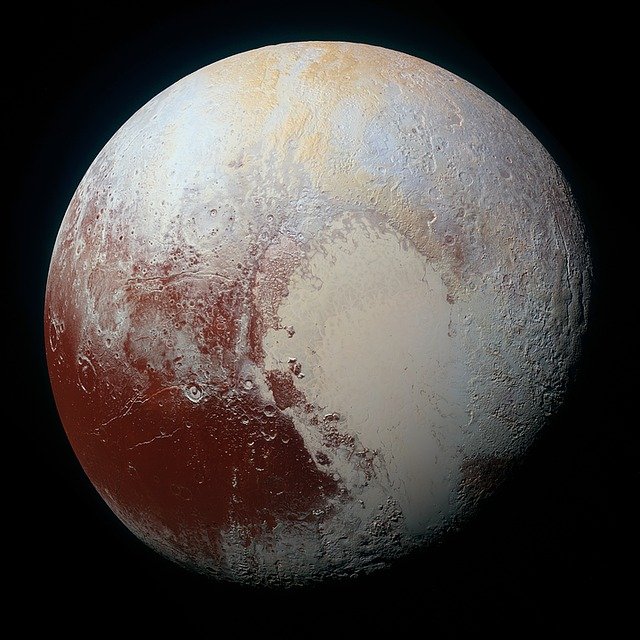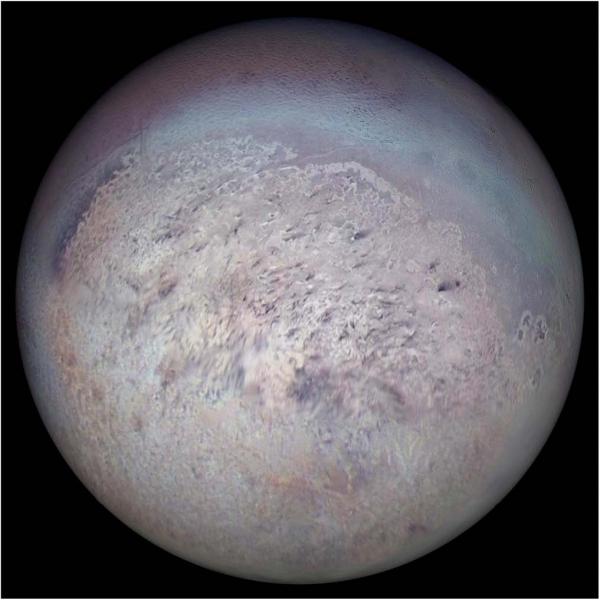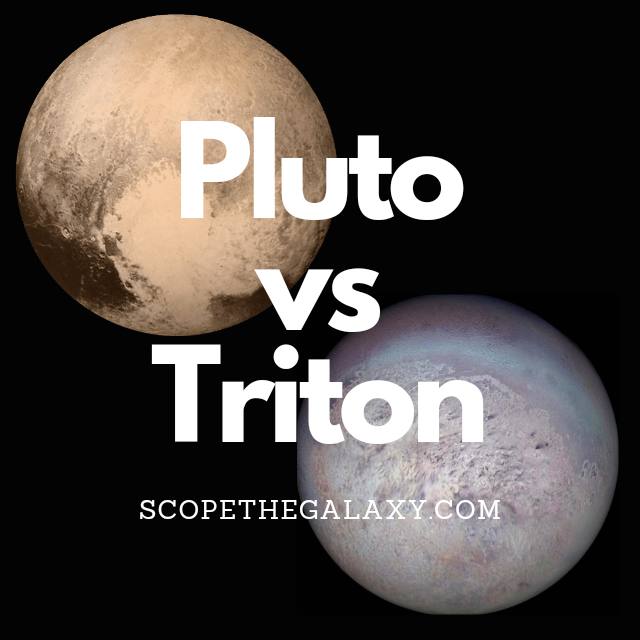*This post may contain affiliate links. This means we may make a commission if you purchase an item using one of our links*
The main differences between Pluto and Triton are that Pluto is a dwarf planet with a diameter of 2,370km whilst Triton is a natural satellite that orbits Neptune with a diameter of 2,706km, Pluto has 5 moons whilst Triton has 0 and Pluto’s axial tilt is far grander than Triton’s at 57 degrees as opposed to Triton’s that is practically 0 degrees.
For a more detailed look at both entities, continue reading as the differences, similarities and what makes each body what they are will be covered more thoroughly below.
What Is The Planet Pluto?
Table of Contents

In the past Pluto was the 9th farthest official planet in our solar system however, in 2006 after many debates between astronomers, the International Astronomical Union officially downgraded it to a dwarf planet.
The reason for this downgrade at the time was primarily down to Pluto simply being very small when compared to every other planet and even the moons orbiting these planets. Pluto’s dwarf status is debated still to this day but, for now it still remains under this dwarf bracket for a planet
Its diameter for example is only 2,370km, which is a third of Earth’s Moon. With that being said, despite the significant size discrepancy Pluto shows, it still does have more moon like objects orbiting it than Earth and I’m not saying just one more.
In total this terrestrial dwarf planet has 5.
Pluto’s atmosphere consists mostly of molecular nitrogen whilst molecules of methane and carbon monoxide have been observed also. As for its surface, it consist mostly of frozen nitrogen, methane, and carbon monoxide ices.
One of Pluto’s most unique characteristic is that Charon (its largest moon) is tidally locked to it and vice versa, which means that the two essentially orbit each other.
In essence only one side of Charon and one side of Pluto surface will face each other at any given time.
Pluto’s temperature is between -222 to -232 degrees Celsius based on how close it gets to the Sun when orbiting it, whilst its core temperature isn’t anything too special sitting around 500 – 1,000 degrees Celsius.
The main reason it’s as cold as it is and has a relatively cold core in comparison to the other planets would be, which is mostly down to its size. A larger size would mean more mass could be compressed at the center which would produce more heat at the core.
Pluto’s orbit is also different from the other main plants in our solar system, following an elliptical orbital path as opposed to the circular path the others take. As a result of its distance from the Sun, Pluto will complete each one of these elliptical cycles around once every 247.78 years.
Even its rotational cycle is very slow, where one cycle is completed in 157 hours. Another interesting fact is the Pluto’s axial tilt is almost on its side at 57 degrees, similar to Uranus.
What Is The Moon Triton?

Triton is the largest moon of Neptune, whose most unusual feature is its retrograde orbit. Triton is the only major moon in our solar system which orbits in the opposite direction of its planet’s rotation.
First discovered on 10th October 1846 (just 17 days after the discovery of its planet, Neptune) by British astronomer William Lassell, “Triton” comes from a merman in Greek myth; a name which perhaps stems from the composition of this faraway moon.
The diameter of Triton is approximately 2,706km, making it a similar size to Earth’s moon. However, we know that its mass is far less than the first estimates suggested because data from Voyager showed that the surface is icy and highly reflective, a less dense composition than the dark surface of our moon.
This icy surface has resulted in ice based natural satellite displaying temperatures in the region of – 235 degrees Celsius.
This lower density stems predominantly from the water-ice interior encasing a denser rock core. Still, the mean density of 2.06 grams per cubic cm remains higher than that of any of Saturn’s or Uranus’ moons. In addition, Triton holds more than 99.5% of the mass of everything that orbits the planet Neptune and its total mass is greater than every smaller satellite in the solar system combined.
Scientists think that Triton may be an object from the Kuiper Belt that Neptune’s gravity captured millions of years ago. This is because it shares many similarities with the dwarf planet Pluto – the best-known world within the Kuiper Belt.
This frozen world is a land of geological oddities with craters and a collection of depressions and ridges known as cantaloupe terrain. The geysers found on this moon shoot plumes of nitrogen as high as 8km high, which creates a thin atmosphere of nitrogen.
In around 3.5 billion years, Triton’s orbit will travel too close to Neptune, and the planet’s gravitational pull will break the moon apart, creating a ring system.
Similarities Between Pluto And Triton
Pluto and Triton do have their odd few similarities, which in this case includes the below:
- Both have a hotter central core.
- Both have an atmosphere and a rocky and icy surface.
- Both are a spherical shape.
- Both are part of the same solar system.
- Both have no rings surrounding them.
- Neither have plate tectonics.
- Both are tidally locked to another entity
- Both orbit their respective bodies in an elliptical pattern.
- Both have no magnetosphere.
Differences Between Pluto And Triton
As for the differences between the two, they include the below.
- Triton orbits Neptune whilst Pluto only orbits the Sun.
- Pluto has a diameter of 2,370km whilst Triton’s diameter is 2,706km.
- Pluto has 5 moons whilst Triton has 0.
- Triton has a very thin exosphere composed mostly of nitrogen with small amounts of methane whilst Pluto’s atmosphere is also thin but composed of nitrogen, methane and carbon monoxide.
- A day on Triton takes 5.877 days whilst a day on Pluto is 157 hours.
- It takes Triton 5.877 days to orbit Neptune and around the Sun in 165 years whilst Pluto orbits the Sun in 247.78 years.
- Pluto has an axial tilt of 57 degrees whilst Triton’s axial tilt is close to 0.
- Triton’s average temperature is around -235 degrees Celsius whilst Pluto’s is -222 to -232 degrees Celsius.
- Pluto’s density is 1.88 g/cm³ whilst Triton’s density is 2.06 g/cm³.
- Pluto has a mass of 1.309 x 10^22 kg whilst Triton’s mass is 2.14 × 10^22 kg.
- Triton’s gravitational strength is 0.779 m/s² whilst Pluto’s is 0.62 m/s².
- Triton is the only moon in our solar system that orbits its planet in a retrograde orbit whilst Pluto orbits the Sun in a counterclockwise orbit like all the other planets.
Summary
Although both Triton and Pluto are tidally locked to another entity, have no magnetosphere and have a rocky and ice based surface, there are still a number of factors that distinguish the two from one another.
Whether it be in regards to size, mass, their volcanic activity, length of day and beyond, Both bodies have enough differences between each other that makes them stand out as distinct entities within our solar system in their own right.

